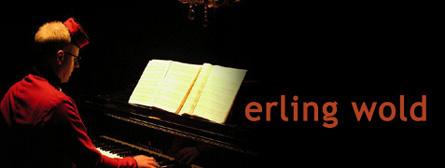For many years, I was happy enough that I had an Erdős number of 5. It seemed appropriate given my tangential connection to mathematics, using and sometimes developing, around the edges anyway, but not working on any deep mathematical truths, like how to cut a birthday cake in an ultra-fair way given that your friends are remarkably suspicious and back-biting. But recently, as I’ve gone back to doing a little more math in my day-to-day life, I found myself clicking about in the Erdős graph and, oh joy of joys, discovered a new lower bound, a fellow integer with the previous on that smallest integral right triangle.
Now, some of my friends might say, Erling, if 5 was good enough, if you were happy in that life, why search for more? Why risk the coconuts that might fall from the shaken tree? Ah, I would say, there is nothing to fear, as when one searches for a shorter path, that search is defined by the shortest path found so far, and a bound that has been discovered can be made better but never worse. 3 and even 2 are now possible, if unlikely, but 5 will never be again.
As it happens, this new shorter path wends through the same author and colleague as the last, the late Oscar Rothaus, mostly of Cornell University, best known for work on the very useful Hidden Markov Models - you know, that every speech recognition system uses. The paper was Fast Fourier transform processors using Gaussian residue arithmetic by Alvin M. Despain, Allen M. Peterson, Oscar S. Rothaus, and Erling H. Wold [Ed: note the order of names was suggested by Al, one might think in a spirit of bonhomie and all-for-one, but an order most often suggested by those who spend their life in the glow of the beginning of the alphabet, knee to knee with the camp counselor and first across the street holding the teacher’s hand]. Although it was already well known that some computational problems would lend themselves to attack using a residue number system, our technique was a clever combination of Al’s beloved CORDIC rotations along with residue arithmetic using not the regular old primes, but some small complex - aka Gaussian - primes, breaking the problem into very small pieces that could then be computed with tables.
The paper was supported, like so much work on computation then and now, by the Department of Defense. Oscar and Allen and Al were all up in it, all part of the JASON Defense Advisory Group, a group of people who were tasked with searching through every bit of technology and science to see if there was something in it that speed up the process of killing or of being killed, and who have been favorites of the conspiracy theorists, controlling the weather and magnetizing the children. At the time, the reason that was given for faster and faster transforms was that, in a dogfight, one needs to decode and block the other fellow’s frequency-hopping radar while at the same time hopping your own and detecting the other fellow's attempts to block you and hopefully blowing him out of the sky during that moment of arbitrage when you’ve hopped and he yet hasn’t. But, unlike the other paper I wrote with Al, Pipeline and Parallel-Pipeline FFT Processors for VLSI Implementations, I don’t believe our clever Gaussian residue approach was ever used in an instrument of death. I don’t know for sure, as I didn’t have the clearances to know, but it never came up again, while I was questioned in some detail about the parallel-pipeline stuff by engineers from Westinghouse, that same Westinghouse who built the radar that detected the Japanese attack on Pearl Harbor, but which wasn’t believed by anyone, a seemingly unbelievable suggestion on a beautifully crisp Hawaiian winter day.
But, getting back to my happier graph traversal, from there, the next node on the new path is to Further results on p-automorphic p-groups by James R. Boen, Oscar S. Rothaus and John G. Thompson, a paper which tightened some constraints on counterexamples to a conjecture by Boen as to whether certain p-automorphic p-groups are Abelian. Boen, whose conjecture was later proved by Shult, is interesting in a number of ways: very active in mathematics and science, but also an activist quadriplegic for the last fifty or so years of his life. But even more interesting to us here is that, in 2012, Hugh L. Montgomery and the same John G. Thompson above published an article in Acta Arithmetica on Geometric properties of the zeta function. In it, they summarize the state of topographical knowledge of Herr Riemann's delight, and by so doing, laid the extra edge that allowed my number to drop, as Hugh Montgomery had, many years before, published Sums of Numbers with Many Divisors, which looks at representing large integers as sum of highly divisible … oh let’s just quote their abstract in all its poetry:
Let k be a fixed integer, k⩾2, and suppose that ε>0. We show that every sufficiently large integer n can be expressed in the form n=m1+m2+…+mk where d(mi)>n(log 2−ε)(1−1/k)/log log n for all i. This is best possible, since there are infinitely many exceptional n if the factor log 2−ε is replaced by log 2+ε.
squee!






No comments:
Post a Comment